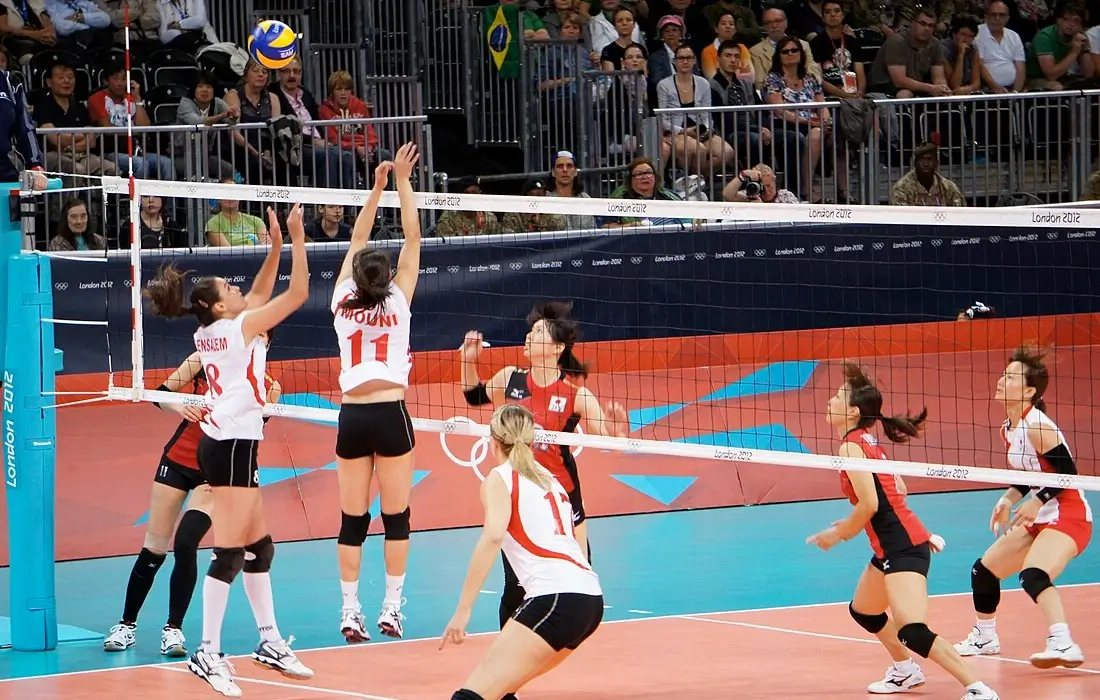Last Updated: February 27, 2024
Choosing the right volleyball plays depends solely on the strategy of the team, as well as the opponent team. Winning in volleyball isn’t only about developing the right strategy but also about observing the other team and trying to counter attack.
There are countless offensive plays out there, and each of them has a unique role and goal.
Here are a few useful ideas to implement for the next game.
Best Offensive Volleyball Plays

High Ball on the Outside, Speed in the Middle
The speedy aspect of this play is referred to as the double quick. It’s a common syntax in volleyball, meaning the middle hitter pushes forward as front 1. Meanwhile, the right attacker will move for back 1.
The move may feel like leaving your team discovered, but it won’t. In fact, if your team manages to match defensive and offensive players according to the other team’s skills and tactics, your attack goes back to basics, one-on-one.
When done correctly, the play sends the middle blocker by the middle hitter. At this point, the outside hitter will be one-on-one against the outside blocker.
Faster Offense with a Lightning Combination
This combination is extremely fast and can turn a random attack into a stunning point when executed correctly. Of course, it requires lots of training upfront.
Most plays require very precise passing to succeed. The best part about this play is that you can succeed and surprise the opponents even if the pass isn’t great.
To keep it simple, you’ll shoot to the outside. Right away, 1 will slide towards the middle, then backslide to the right. When it comes to slides, attackers will find it much easier to adjust on the go.
The play is way simpler than pushing for quick 1 attack through the middle. Such a move requires an early approach. When you slide, you can forget about it. Simply chase the ball and attack.
Fast Play with Great Passing Requirement
There are all kinds of plays out there. If your team is great at passing, this play will give you a quick attack without having to make moves that are too complicated.
Simply go for a high ball outside, then push for the quick 1 ball to the middle just before backset 2 ball. The combination is fast and must be done naturally, hence the necessity of training. It’s more difficult to execute than other similar plays because passes must be flawless.
Tool the Block
This play isn’t always a priority for players, yet it becomes extremely useful if the opponent team has very tall blockers. It makes sense for blockers to be tall, but sometimes, the height alone could be a massive inconvenience for your team.
This type of attack is known as a tool. You’ll basically have to aim for the arms and hands. By hitting with maximum strength in the block, you can still score a point, even if you hit the blocker.
Stopping such an attack is difficult because of the element of surprise. It’s nearly impossible to anticipate where the ball may go or fall. Many times, it goes back to the defenders’ side of the court.
Slide Attack for the 6-2 Offense
The slide attack is a challenge for any defense. It’s not the type of attack to perform all the time, but it’s definitely a surprise to try out every now and then. Its success is based on the element of surprise.
The setter must set the ball behind towards the middle hitter. The middle hitter will then approach from the right, getting ready for a slide attack. This attack is conducted by the middle hitter.
What makes the attack stand out is the fact that the middle attacker must run by the net in a parallel direction. It’s a very unusual move for volleyball, meaning the opposing blockers will have no clue what’s going on.
The move is confusing, weird and awkward, so anticipating the final attack is nearly impossible.
Back Row Attack to Surprise Blockers
If you love surprises and unusual moves, the back row attack is just as effective and can definitely look spectacular if executed correctly. This type of attack shouldn’t really be used as a regular. Instead, it’s a backup surprise solution to take out every now and then.
To make it successful, you’ll need to set a back row attacker for the team. It all starts with the setter, who needs to set the ball near the three meter line. That’s when the back row attacker kicks in with a surprising approach to attack and send the ball over the net.
Not only is it surprising, but the distance means the block won’t necessarily be too effective.
Surprising Quick Attacks for Short Attackers
Short attackers against tall defenders? No problem. While more difficult to attack in this case, the good news is you can still use the element of surprise and come up with some deadly attacks.
Attacking through the middle is actually doable, but the move implies using the setter as a decoy. Have the setter fake a couple of attacks. Instead of actually attacking, the setter should actually set a quick attacker.
The quick attack can also be used to trick the opposite defense. A setter could take it but send the ball towards the outside attacker.
Given all the defensive blockers trying to figure out what’s going on, the outside attacker will most likely have to face a single defender only. This one-on-one situation will give the attacker a slight advantage, despite being shorter than the defender.
Conclusion
There are countless plays out there, and while some teams focus on being the best at some of them, others would rather have the option to adjust game by game based on who they play against and their offensive strategy.
Different plays are suitable for different situations. Some of them are defensive, others are meant for quick attacks. Some plays are great when your attackers are too short, and others are useful if you would like to surprise the opponent. Being flexible is, therefore, a must when trying out different plays.
